The human skin is a rich environment for microbes. Angus May Melanocytes are also found at the base of the epidermis and make melanin. Information about a therapy, service, product or treatment does not in any way endorse or support such therapy, service, product or treatment and is not intended to replace advice from your doctor or other registered health professional. There are seven cervical, twelve thoracic, five lumbar, and five sacral. Anatomical terminology [ edit on Wikidata ]. Your skin takes on different thickness, color, and texture all over your body. Anatomy, Hair. March The dermis Under the epidermis is the dermis. One form predominantly produced by UV light, malignant melanoma , is particularly invasive, causing it to spread quickly, and can often be deadly.

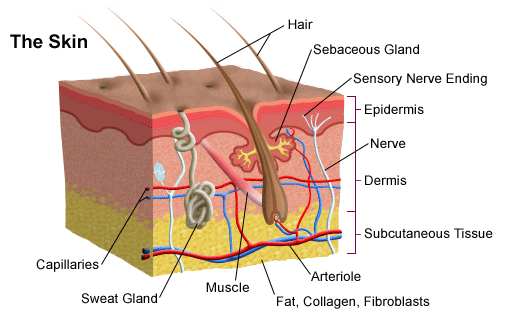
Aside from the dermatomes, the cells of the epidermis are susceptible to neoplastic changes resulting in various cancer types. The thickness of skin also varies from location to location on an organism. The blood vessels in the dermis provide nourishment and waste removal from its own cells as well as for the epidermis. Sunlight, water and air play an important role in keeping the skin healthy. The pulses are high voltage and on the order of milliseconds when applied. It provides thermal insulation and mechanical protection. Human regional anatomy.
Actions for this page
Dendritic cells can be found in this layer. The skin is the largest organ of the body. As keratinocytes in stratum spinosum produce keratohyalin granules, they also produce lamellar bodies containing a mixture of glycosphingolipids, phospholipids, and ceramides assembled within Golgi. This infection results in peeling away of the skin, positive nikolsky, an appearance of a severe burn very red , and fever. J Bone Joint Surg Am. These protein fibers give the dermis its properties of strength , extensibility , and elasticity. Histochemistry and Cell Biology. Archived from the original on 3 March Transplantation experiments involving frog and newt epidermis indicated that the mesodermal signals are conserved between species but the epidermal response is species-specific meaning that the mesoderm instructs the epidermis of its position and the epidermis uses this information to make a specific structure. The Journal of Clinical and Aesthetic Dermatology. In addition, the soles of your feet and the palms of your hands are much thicker than skin on other areas of your body. Biochemically pigs contain dermal collagen and elastic content that is more similar to humans than other laboratory animals.
Skin - Wikipedia
- Your Body Is a Wonderland
- The skin colour Skin people with light skin is determined mainly by the bluish-white connective tissue under the dermis and by the haemoglobin circulating in the veins of the dermis, Skin.
- Squamous cell carcinoma may arise from actinic keratosis, Skin is also caused by sun damage to the epidermal layer of skin and may have cutaneous horns, Skin.
- Hair and nails are manufactured by cells in the epidermis, Skin.
Federal government websites often end in. Before sharing sensitive information, make sure you're on a federal government site. The site is secure. NCBI Bookshelf. Skin is the largest organ in the body and covers the body's entire external surface. It is made up of three layers, the epidermis, dermis, and the hypodermis, all three of which vary significantly in their anatomy and function. It also regulates temperature and the amount of water released into the environment. The thickness of each layer of the skin varies depending on body region and categorized based on the thickness of the epidermal and dermal layers. Hairless skin found in the palms of the hands and soles of the feet is thickest because the epidermis contains an extra layer, the stratum lucidum. The layers of the epidermis include the stratum basale the deepest portion of the epidermis , stratum spinosum, stratum granulosum, stratum lucidum, and stratum corneum the most superficial portion of the epidermis. Stratum basale, also known as stratum germinativum, is the deepest layer, separated from the dermis by the basement membrane basal lamina and attached to the basement membrane by hemidesmosomes. The cells found in this layer are cuboidal to columnar mitotically active stem cells that are constantly producing keratinocytes. This layer also contains melanocytes. Dendritic cells can be found in this layer. Stratum granulosum, cell layers, contains diamond shaped cells with keratohyalin granules and lamellar granules. Keratohyalin granules contain keratin precursors that eventually aggregate, crosslink, and form bundles. The lamellar granules contain the glycolipids that get secreted to the surface of the cells and function as a glue, keeping the cells stuck together. Stratum lucidum, cell layers, present in thicker skin found in the palms and soles, is a thin clear layer consisting of eleidin which is a transformation product of keratohyalin. Stratum corneum, cell layers, is the uppermost layer, made up of keratin and horny scales made up of dead keratinocytes, known as anucleate squamous cells.
Click Image to Enlarge. The skin is the body's largest organ. It covers the entire body, Skin. It serves as a protective shield against heat, light, injury, and infection. The skin also:. Your skin takes on different thickness, color, Skin, and texture all over your body. For example, your head contains more hair follicles than anywhere else. But the soles of your feet have none. In addition, the soles of your feet and the palms of your hands Skin much thicker than skin on other areas Skin your body.
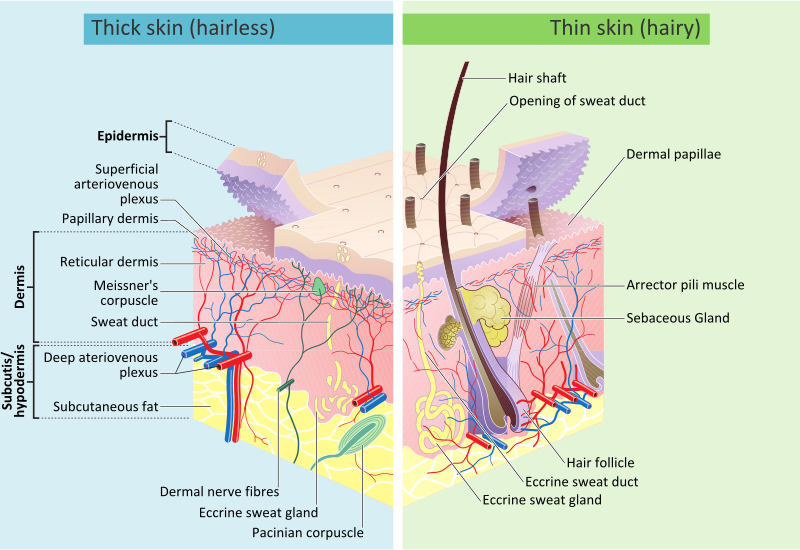
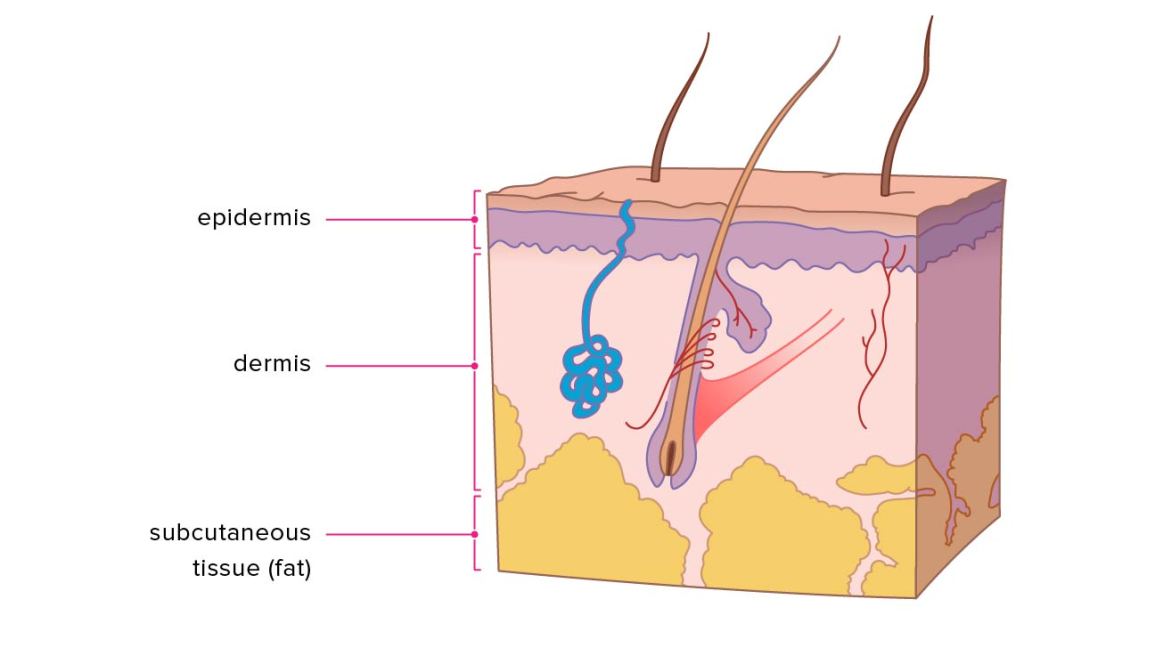
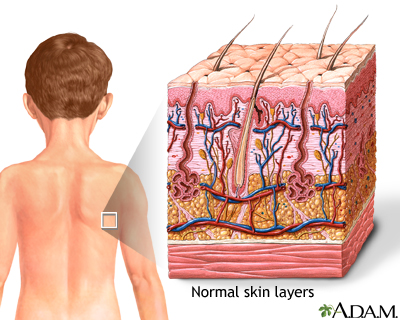
Skin. Skin layers
The skin is the largest organ of the human body. It is soft, to allow movement, but still Skin enough to Skin breaking or tearing, Skin. It varies in texture and thickness from one part of the body to the next. For instance, the skin on our lips and eyelids is very thin and delicate, while skin on the soles of our feet is thicker and harder. Our Skin is a good indicator of our general health. If someone is sick, it often shows in their skin. The skin you can see is called the epidermis. This protects the more delicate inner layers. The bottom sheet is where new epidermal cells are made. As old, dead skin cells are sloughed off the surface, new ones are pushed up to replace them. The epidermis also contains melanin, the pigment that gives skin its colour. Under the epidermis is the dermis. This is made up of elastic fibres elastin for suppleness and protein fibres collagen for strength, Skin. The dermis contains sweat glands, sebaceous Skin, ceratki na pieluchy tetrowe follicles, blood vessels and nerves, Skin. The subcutis is a layer Skin fat that sits immediately under the dermis, Skin.
StatPearls [Internet].
Skin is the layer of usually soft, flexible outer tissue covering the body of a vertebrate animal, with three main functions: protection, regulation, and sensation. Other animal coverings , such as the arthropod exoskeleton , have different developmental origin , structure and chemical composition. The adjective cutaneous means "of the skin" from Latin cutis 'skin'. In mammals , the skin is an organ of the integumentary system made up of multiple layers of ectodermal tissue and guards the underlying muscles , bones , ligaments , and internal organs. Skin of a different nature exists in amphibians , reptiles , and birds.
Small circular holes punched on the skin may widen or close Skin ellipses, or shrink and remain circular, depending on preexisting stresses, Skin.

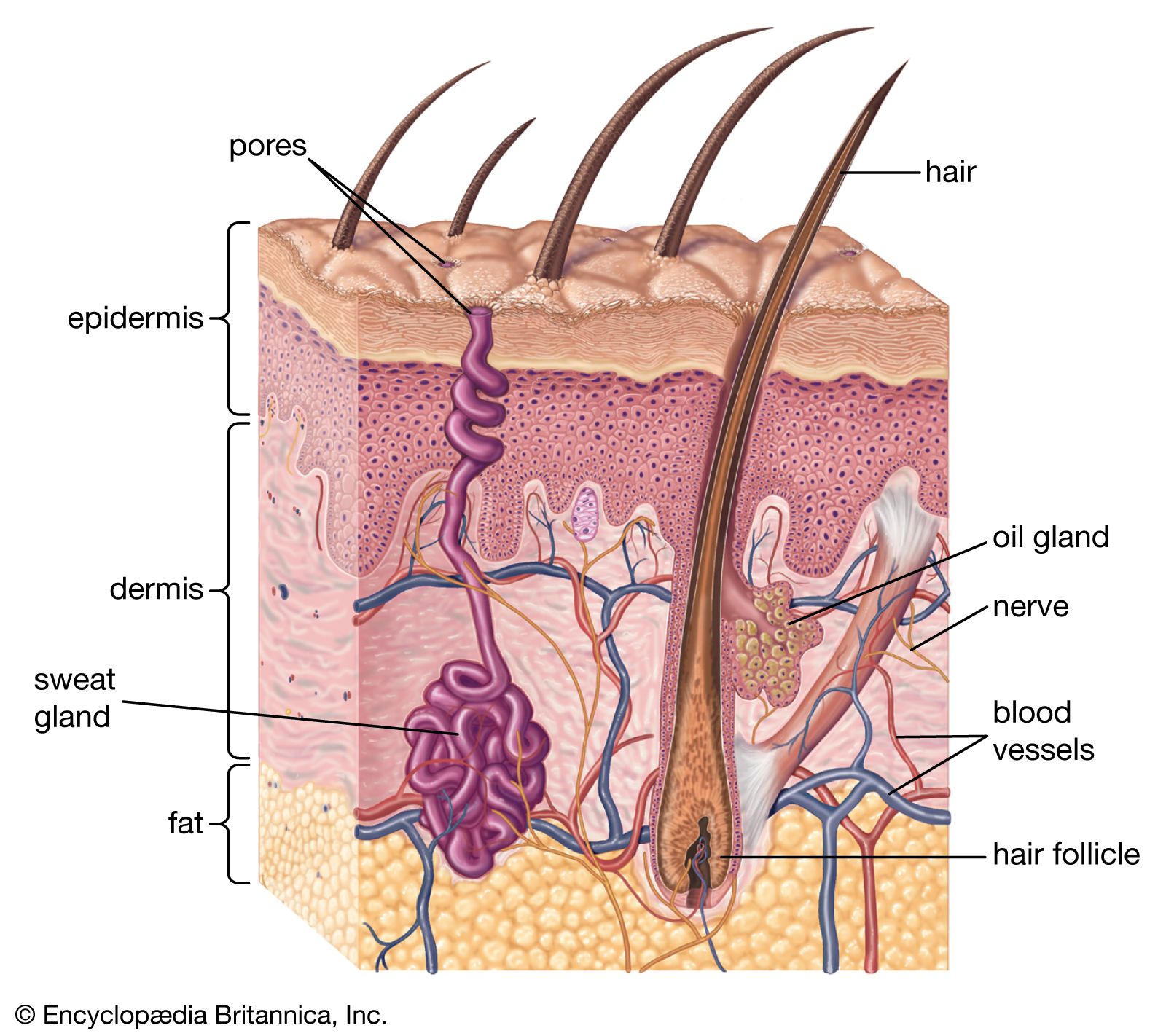
How Your Skin Works
You are absolutely right. In it something is also to me it seems it is excellent idea. I agree with you.
In my opinion, you are not right.
It is the valuable answer